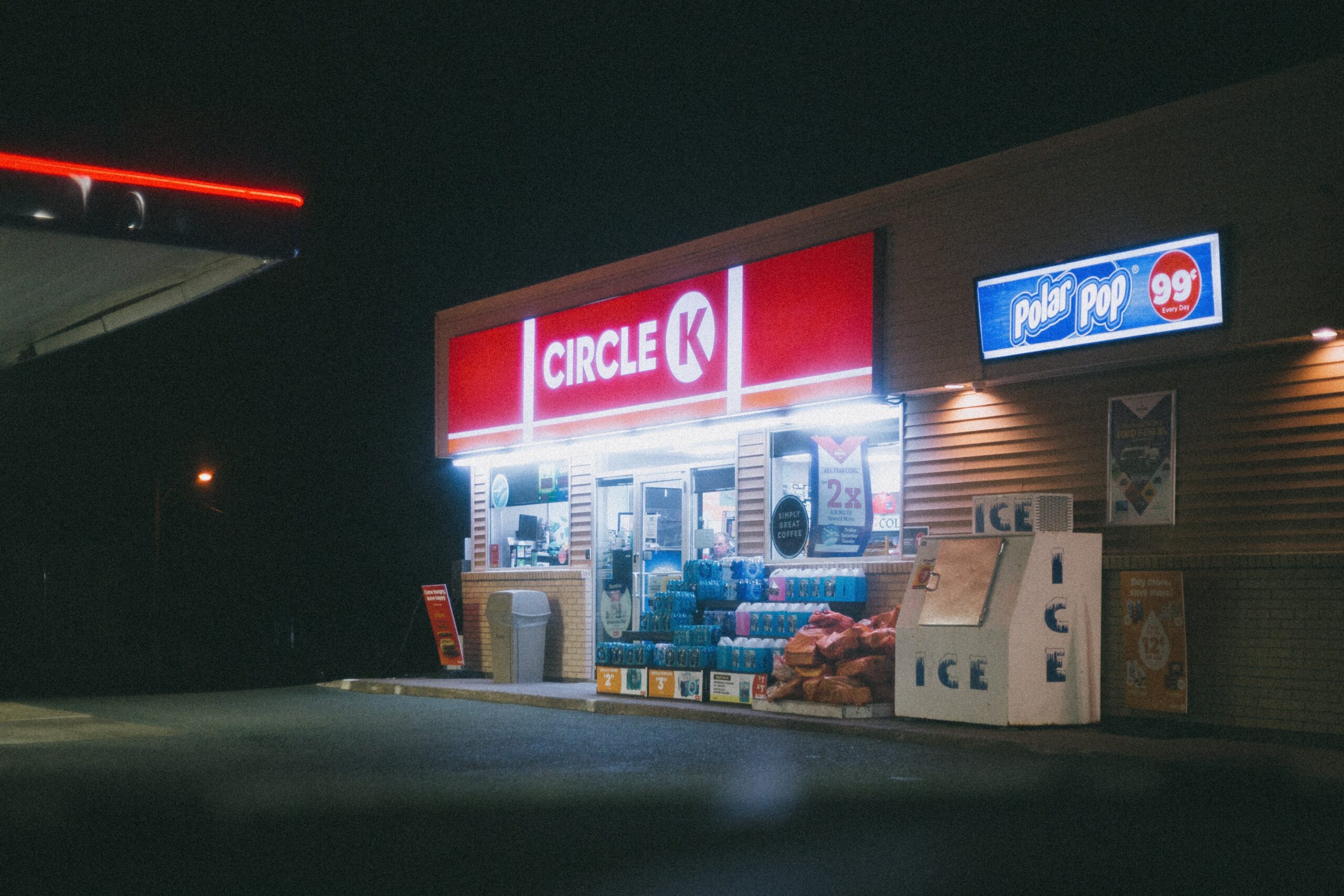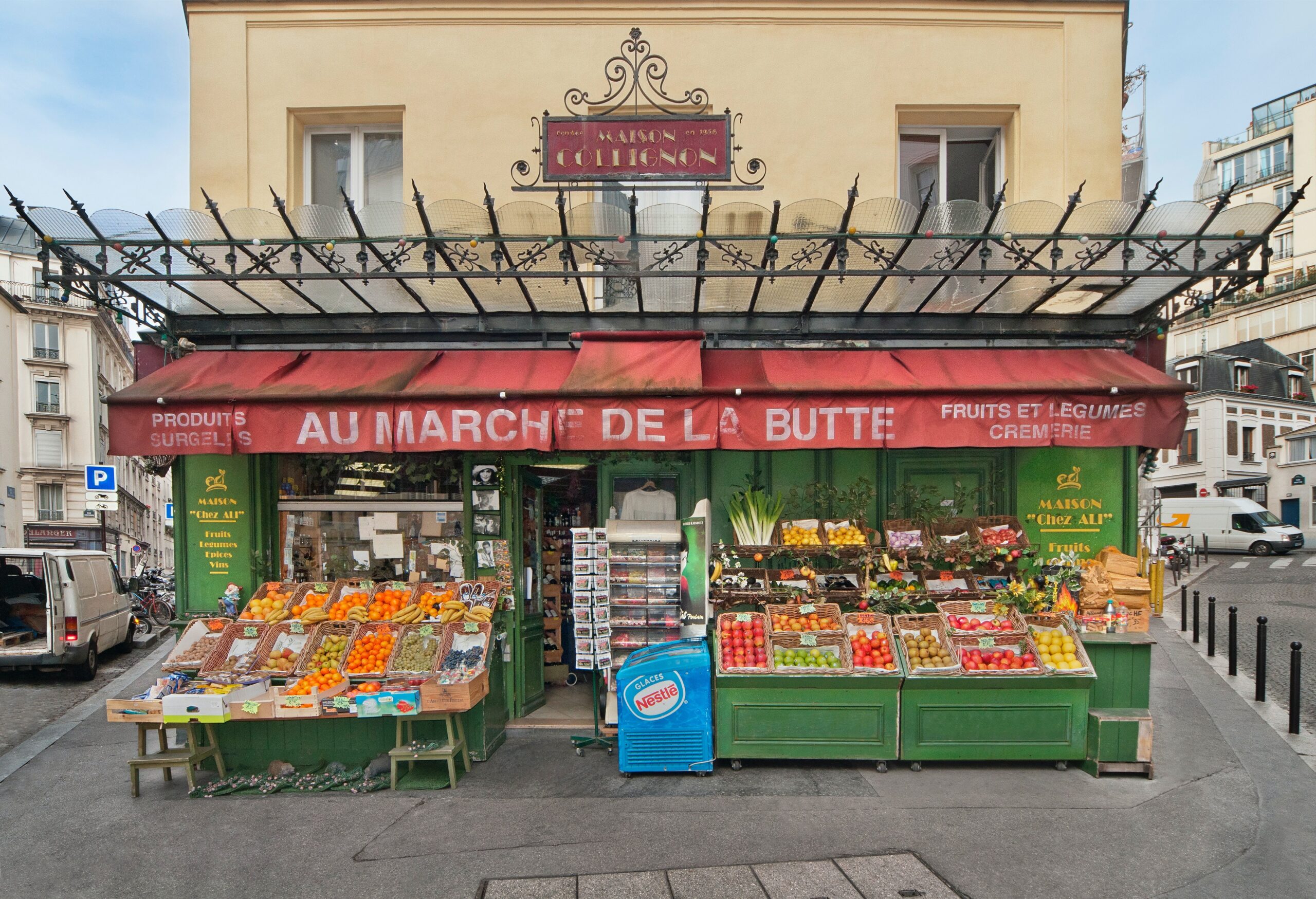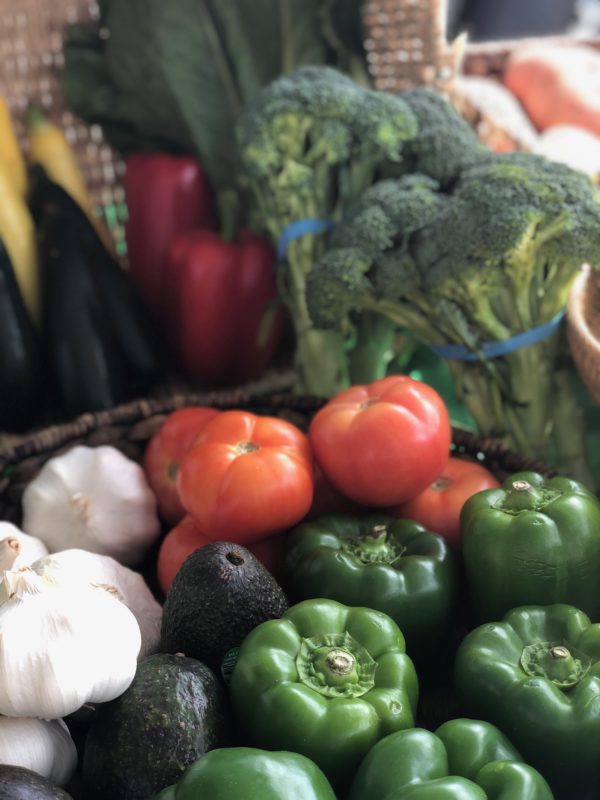Part I: The Problem
Food security requires that food is available, accessible, stable, usable, and nutritious. Food insecurity is a term that defines chronic hunger currently experienced by as many as 811 million people worldwide. Many people living in poverty exist in conditions known as food deserts, or places where the supply of food is limited, and any of the aforementioned characteristics of food security are not met. Due to a lack of access to a consistent supply of nutrition, around 20% of households live off whatever they can to keep their families alive. Most often, this entails frequenting cheap fast food chains, as well as snacks and heavily processed foods found in corner stores.
This lack of access to nutritious affordable food has people starving or eating their way to serious health conditions. In a city like New Orleans whose culture is so heavily intertwined with cuisine, it is ironic how much of the city exists in food deserts. Where some celebrate even the smallest occasions in New Orleans with crawfish etouffee, jambalaya, beignets, and more, a large percent of the people that are the heart and soul of the city in question face the impossible decision of whether to pay their rent or to feed their families in New Orleans, Gluttony and Starvation Live Side by Side. The number of corner stores in their neighborhoods heavily outweighs the number of grocery stores, and access to sufficient food is completely limited. According to Feeding America, one out of every four people in the state of Louisiana live in a state of chronic hunger.

Corner Store, Erik Mclean
The corner store-to-food market ratio in New Orleans is 10 to 1 respectively, making it difficult for residents to make affordable and nutritious choices. The issue has many layers. It begins on an institutional level with education, and the opportunity to sustain jobs with survivable wages. For those who don’t have the luxury of basic human rights, there are limited means of transportation to supermarkets that might be at least a mile from where they live.
Specifically, the Lower Ninth Ward is a community with no commercial grocery stores that is isolated from the rest of the city. Still facing devastation from Hurricane Katrina, the 5,560 residents of the community live at least two miles from the closest grocery store and don’t have a reliable method of accessing it, placing the parish well within the USDA’s categorization of a food desert. Residents of communities worldwide like the Lower Ninth Ward, whose diets consist of chips, sugary drinks, and fried meats, face greater health risks than those who live elsewhere. Furthermore, these conditions disproportionately affect people of color. According to a study published by the American Heart Association, individuals living in food deserts were predominantly black, about 52%. The study shows that within the sample of people living with lower access to food, there is a heightened “prevalence of hypertension and smoking rates, higher BMI and fasting blood glucose levels, (Kelli, Heval M et al).”
The American College of Cardiology confirms that indeed, among low-income communities in which the majority of residents are black men, the risk for cardiovascular disease is much greater. Lacking access to healthy food goes beyond hunger, and is much deeper than causing people to be overweight. Heart disease is the leading cause of death in the United States, which is why working towards a solution is so crucial (Mc Namara, Kevin, et al). The disproportionate ways in which food insecurity affects people of color in comparison with white people is a prime example of structural racism, wherein society perpetuates “inequitable systems”(Odoms-Young).
Not only does feeding people improve their quality of life, but it saves thousands of lives lost each year to food insecurity or related causes. New Orleans residents point out the disparity that exists in their city and the country, between race and poverty and food access. They discuss the lack of upward mobility that their community faces, as part of a vicious cycle of poverty felt predominantly by people of color. They attribute this to the historical relationship of wealth in the United States, wherein black people were traditionally excluded from income, so the amount of work they have done does not equate to a proportionate accumulated income in comparison to white people. The reality is, there is a juxtaposition between the image of the City of New Orleans seen by tourists, outsiders, and the wealthy top percent, and the experience felt by locals who have inhabited the city for multiple generations. These are the people who have watched thousands of people flood their city for festivals and conventions, indulging in the cuisines of the city. Meanwhile, 40% of food produced in the United States each year will end up in a landfill. The gap between food waste and overproduction, and the amount of people facing food insecurity is nonsensical. Consequently, the solution to feeding hungry people lies in closing this gap. This can be accomplished by rescuing food and focusing on revolutionizing the way it is distributed (Forbes et al.).

Paris Street Market(Photo by David Henry)
Part II: The Solution
Paris, France has a unique network of food vendors that allow the city to offer, in some cases, more than three food stores per 1,000 residents. This statistic is driven out of the city’s 2010 initiative to “work to develop sustainable food systems that are inclusive, resilient, safe and diverse, that provide healthy and affordable food to all people in a human rights-based framework, that minimize waste and conserve biodiversity while adapting to and mitigating impacts of climate change”(Milan Urban Food Policy Pact). This ambition, however, does not create a solution without commitment to diligent efforts.
The city has implemented a multilayer solution to not only bandage an issue of food access but to work from the inside out to build a more sustainably fed city. This entails four “themes,” each of which includes detailed steps in order to ascend from goals to outcomes. The first theme, access to sustainable food for everyone, focuses on small local stores to provide “priority communities” with increased access to local products. It includes innovative ideas to facilitate this access such as mobile markets and food aid plans for those in need. Theme 2 expresses the need for increased autonomy and food resilience to help alleviate pressure felt as a result of changes and crises (though resilience is a term that must be used with caution, to avoid downplaying struggles faced by people in cities where disaster strikes). This places emphasis on relationships between the players in the food chain (like growers and consumers), and support of local growers by increasing distribution sites or small local vendors. There is also heavy emphasis placed on the importance of sustainability, which they combat with research and support where needed. The third theme discussed in the Paris Plan of Action is focused on the root of the issue, which is dealing with and preventing food waste. One of the ways they plan to do this is by redistributing unsold food and educating people to prevent future waste. It also recognizes major events and celebrations as large contributors to food waste. The city is dedicated to increasing eco-friendly events, to reduce the waste of food and packaging. Finally, the fourth theme is the organization of networking and partnerships among the Parisian community. Implementing an education program is arguably equally important as increasing access, as one can not be successful without the other.
The plan aims to facilitate workshops partnering schools, families, and other networks with farms, allowing for increased awareness among various crucial populations about nutrition, and its importance. This inclusive and diligently detailed framework for change has allowed the city of Paris to combat food insecurity across multiple communities (Paris Strategy for Sustainable Food). This solution for change shows that although it takes work, the world does actually have the resources to combat the issue of food insecurity. Just because people lack access to resources, doesn’t mean that the resources themselves are insufficient in supply. Decreasing/rediverting food waste, revolutionizing distribution methods, and instilling higher levels of education and human connection is the basis for coming to a solution. Like any solution, Paris’s ideas are not magic nor immediate. They will take years of practice to come to fruition, and many people will remain hungry and/or ill until then.
The four-theme plan, additionally, does not address every layer of the issue. It neglects an important discussion of the systemic issues that cause people to face food insecurity in the first place. It does not combat the issue of unemployment or underpayment, which are significant players in why thousands of people do not have access to quality food. It also does not discuss food prices, and food in Paris still averages about 6.5% higher than in the rest of France. The city also sources much of its product from distant regions, so it requires long traveling distances which is expensive, and unsustainable. Regardless of its shortcomings, the four-theme plan is undoubtedly effective. This has been proven by the ratio of markets to people, which is higher than in most other cities. Paris’s strong presence of markets puts the city’s food insecurity at only about 6.3% of residents, as opposed to a staggering ⅙ people in Louisiana.
Part III: Implementation
It would be advantageous for New Orleans to look at Paris’ plan to combat food insecurity. Certain issues the initiative focuses on are pretty consistent with one’s existing in New Orleans food deserts. It emphasizes the need for small local markets in communities lacking large commercial stores. This has already proven to be necessary for the Lower Ninth Ward of New Orleans, where resident Burnell Cotlon risked his life’s savings to open a market for the community post-Katrina. The market remains the only food retailer in a 5-mile radius. Burnell has been deemed a hero and even allows some customers to operate on a credit-based payment system when they can’t afford to pay the food prices in full. Although Burnell is helping many people in his community with his store, he is just one man. The one market can not solve the community’s food insecurity on its own, but it does stand as an example of why small local markets work by eliminating the obstacle of lacking transportation to grocery stores and supplying a community with food they can actually afford.

Fresh produce. Credit: Tulane Hillel
Although opening a supermarket like Whole Foods is not a proper solution to a food desert, large corporations like it can definitely play an active role in being part of a major solution. There are companies like Imperfect Foods that sell produce and things that have varying natural forms and still hold all the same nutritional value, which feed people and combat some of the food wasted daily. Perhaps instead of stores throwing so much unsold food away, much of it could be sent to communities in need to be sold for affordable prices by street vendors and small markets. Of course, sourcing this food is an important factor. Grocery stores throw out perfectly good food every day, simply because it will not sell before perishing. Perhaps, local organizations could pay the price of collecting and transporting these items to their communities. This would save the communities from paying the price of the items, and markets would have much waste to deal with. The outcome would be the same for large supermarkets; they would be rid of excess products. The outcome for the communities that receive the excess product, however, would be a revolution in the quality of life.
In a place like Paris where small markets are on every corner and then some, it is not unfathomable for another little vendor to pop up here and there. However, a city like New Orleans wishing to implement a similar system in its own streets might have a more difficult time when beginning the process. Lacking the same foundation of access Paris has might require New Orleans to take additional steps and allow for a longer time period across which this plan would work. Finding people that want to take the risk in opening markets rather than working their normal hourly wages might pose a challenge. Even though many of their wages are rather unlivable, at least they’re consistent. Opening a market as Burnell did is risky, and takes courage. In the long run, however, it can provide purpose to the owner as well as a new source of income, and supply the community with desperately needed resources.
Increasing access to food, though an undeniably crucial factor in feeding people, won’t solve food insecurity on its own. Educating the people in food desert areas on what they should be eating and why is arguably just as important, as many of them have never had the ability to make informed dietary decisions. Not only do they eat what they can afford, but many of these people are less educated than people in more affluent neighborhoods. To combat this, New Orleans would need to place a heavy emphasis on theme four of the “Paris Plan,” which is increasing awareness and knowledge of the importance of nutrition.
Difficulties aside, opening small markets and local vendors in food deserts is worth the effort. Food supply in these neighborhoods has to increase somehow in order to reduce food insecurity. Opening a large grocery store in a low-income area is risky. Small markets are lower stakes for the business owner and would alleviate some of this risk. This solution, while ideally implemented statewide, would focus on the parts of New Orleans that are currently without food markets, and neighborhoods that are heavily populated by people of color facing excruciating circumstances.
Works Cited
-Examining the Impact of Structural Racism on Food Insecurity: Implications for Addressing Racial/Ethnic Disparities.” Family & community health vol. 41 Suppl 2 Suppl, Food Insecurity and Obesity,Suppl 2 FOOD INSECURITY AND OBESITY (2018): S3-S6. doi:10.1097/FCH.0000000000000183
-Forbes, Hamish, et al. “Food Waste Index Report 2021.” UN Environment Programme, 2021, Accessed 2022.
-Kelli, Heval M., et al. “Association between Living in Food Deserts and Cardiovascular Risk.” Circulation: Cardiovascular Quality and Outcomes, vol. 10, no. 9, 2017, https://doi.org/10.1161/circoutcomes.116.003532.
-Mc Namara, Kevin et al. “Cardiovascular disease as a leading cause of death: how are pharmacists getting involved?.” Integrated pharmacy research & practice vol. 8 1-11. 4 Feb. 2019, doi:10.2147/IPRP.S133088
 NOLAbeings Multimedia artist Claire Bangser created NOLAbeings as a portrait-based story project that marries...
NOLAbeings Multimedia artist Claire Bangser created NOLAbeings as a portrait-based story project that marries...  Voodoo in New Orleans: Reviving history: New Orleans fortune telling This article takes a deep dive into the history of Voodoo in New Orleans, its hybridization with Catholicism, and its present-day place in the city's culture. The author visits fortune-tellers in the French Quarter, using their guidance as a tool for introspection rather than a deterministic predictor of the future. Through her experiences in New Orleans, the author feels a mystical connection to both the past and the future.
Voodoo in New Orleans: Reviving history: New Orleans fortune telling This article takes a deep dive into the history of Voodoo in New Orleans, its hybridization with Catholicism, and its present-day place in the city's culture. The author visits fortune-tellers in the French Quarter, using their guidance as a tool for introspection rather than a deterministic predictor of the future. Through her experiences in New Orleans, the author feels a mystical connection to both the past and the future. 